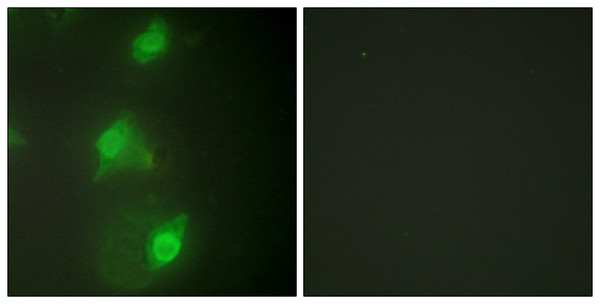| Post Translational Modifications | Phosphorylated. Phosphorylation could trigger oligomerization. |
| Function | Transcription factor playing an essential role to promote self-tolerance in the thymus by regulating the expression of a wide array of self-antigens that have the commonality of being tissue-restricted in their expression pattern in the periphery, called tissue restricted antigens (TRA). Binds to G-doublets in an A/T-rich environment.the preferred motif is a tandem repeat of 5'-ATTGGTTA-3' combined with a 5'-TTATTA-3' box. Binds to nucleosomes. Binds to chromatin and interacts selectively with histone H3 that is not methylated at 'Lys-4', not phosphorylated at 'Thr-3' and not methylated at 'Arg-2'. Functions as a sensor of histone H3 modifications that are important for the epigenetic regulation of gene expression. Mainly expressed by medullary thymic epithelial cells (mTECs), induces the expression of thousands of tissue-restricted proteins, which are presented on major histocompatibility complex class I (MHC-I) and MHC-II molecules to developing T-cells percolating through the thymic medulla. Also induces self-tolerance through other mechanisms such as the regulation of the mTEC differentiation program. Controls the medullary accumulation of thymic dendritic cells and the development of regulatory T-cell through the regulation of XCL1 expression. Regulates the production of CCR4 and CCR7 ligands in medullary thymic epithelial cells and alters the coordinated maturation and migration of thymocytes. In thimic B-cells, allows the presentation of licensing-dependent endogenous self-anitgen for negative selection. In secondary lymphoid organs, induces functional inactivation of CD4(+) T-cells. Expressed by a distinct bone marrow-derived population, induces self-tolerance through a mechanism that does not require regulatory T-cells and is resitant to innate inflammatory stimuli. |
| Protein Name | Autoimmune RegulatorAutoimmune Polyendocrinopathy Candidiasis Ectodermal Dystrophy ProteinApeced Protein |
| Database Links | |
| Cellular Localisation | NucleusCytoplasmPredominantly Nuclear But Also CytoplasmicFound In Nuclear Body-Like Structures (Dots) And In A Filamentous Vimentin-Like PatternAssociated With Tubular Structures |
| Alternative Antibody Names | Anti-Autoimmune Regulator antibodyAnti-Autoimmune Polyendocrinopathy Candidiasis Ectodermal Dystrophy Protein antibodyAnti-Apeced Protein antibodyAnti-AIRE antibodyAnti-APECED antibody |
Information sourced from Uniprot.org











